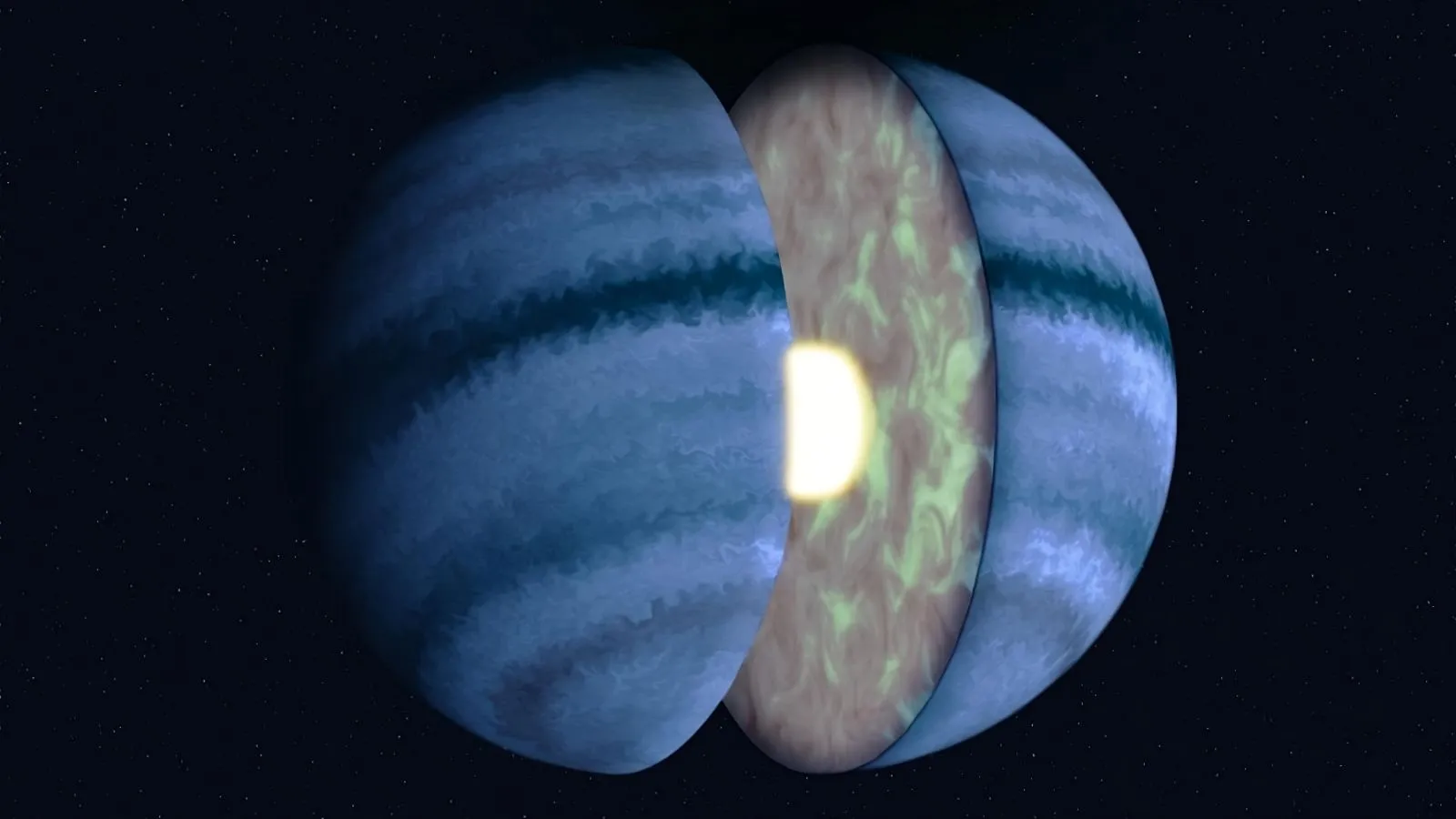Follow us on Google News (click on ☆)

An artistic rendering of WASP-107 b shows atmospheric turbulence within the planet's gaseous envelope.
Credit: Roberto Molar Candanosa/Johns Hopkins University
Recent analyses of WASP-107 b's atmosphere reveal a much lower quantity of methane than expected, along with a surprisingly large core. These findings, derived from measurements taken by the James Webb Space Telescope, provide new insights into atmospheric chemistry and internal dynamics of exoplanets.
Professor David Sing from Johns Hopkins University emphasizes the importance of knowing the mass, radius, atmospheric composition, and internal temperature to understand the internal structure of exoplanets. Data shows that WASP-107 b's core is twelve times more massive than Earth's, even though its methane content is a thousand times lower than predicted.
This planet, cloaked in an atmosphere akin to cotton candy, orbits close to its star, making habitability unlikely. However, studying it could offer valuable clues about the evolution of planets at an advanced stage.
The low methane levels observed have surprised researchers, suggesting that this gas is transformed into other compounds as it rises through the atmosphere. Measurements have also revealed the presence of sulfur dioxide, water vapor, carbon dioxide, and carbon monoxide, indicating an abundance of heavy elements greater than those found on Uranus and Neptune.
These discoveries enhance our understanding of the dynamic chemical processes in extreme exoplanetary atmospheres. Professor Sing plans to study 25 more planets with the Webb telescope to deepen this understanding.
Zafar Rustamkulov, a doctoral student in planetary sciences, notes that the internal heat of WASP-107 b influences its atmospheric chemistry, destroying methane and producing high amounts of carbon dioxide and carbon monoxide. Researchers believe the planet is stretched by its star, which could explain its hot core.
Ongoing research aims to establish clear links between the interiors of exoplanets and their atmospheres, as demonstrated by the detection of sulfur dioxide on WASP-39 last year. The Johns Hopkins team hopes to uncover how these forces influence the internal heat and chemical dynamics of WASP-107 b.